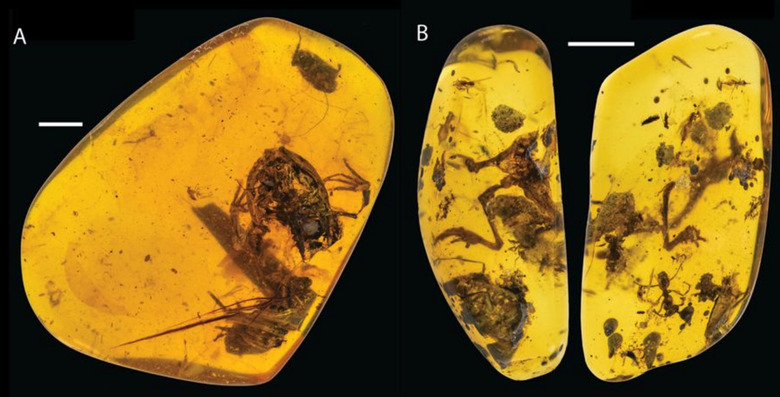This Tiny Frog Captured In Ancient Amber Lived In The Shadow Of Dinosaurs
If there's one thing that Jurassic Park taught us (besides the fact that Jeff Goldblum is a national treasure and should be cherished) it's that ancient tree sap is really really good at preserving bugs. Despite the wealth of pseudoscience and outright fiction in Jurassic Park, the ability of hardened amber to offer a glimpse into the past is very much true.
Insects tend to be the creatures most often discovered in fossilized amber, but every once in a while paleontologists strike gold and find something else. Last year, researchers revealed a nearly-complete bird that had been trapped in the sticky tree goo, and now we have another animal to add to the list. In a large chunk of amber from Myanmar, scientists have discovered what are thought to be some of the oldest frogs ever discovered.
In the amber, which was found an area that scientists believe was once a bustling rain forest, a total of four pint-sized frogs have been uncovered. The well-preserved specimens are in such good shape that scientists have been able to determine that they are entirely new to science. Three-dimensional models of the frogs were created to allow scientists to study them closely without the risk of damage.
"Frogs are a familiar and diverse component of tropical forests around the world," the researchers write in a new study published in Scientific Reports. "Yet there is little direct evidence from the fossil record for the antiquity of this association."
These tiny frogs help to provide that sought-after data. The fossils are the oldest examples of tropical frogs on record, dating back to around 99 million years ago. At that time, the Earth was quite a bit different, and dinosaurs ruled the land. These modest amphibians are a lot like the tropical frogs we see in rain forests today, but they would have likely counted certain dinosaurs species among their primary threats.
Remarkably, scientists weren't actually the ones that first discovered these particular fossils. According to National Geographic, private Chinese collectors had obtained the specimens for their own collections, but chose to donate them for study. If they hadn't, who knows if the new species would have ever been identified.
